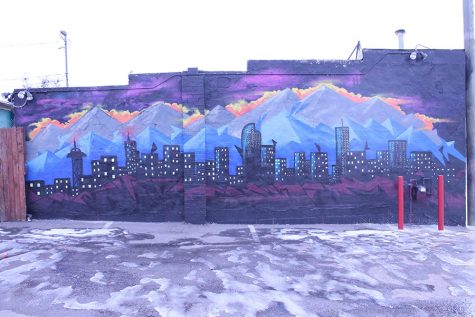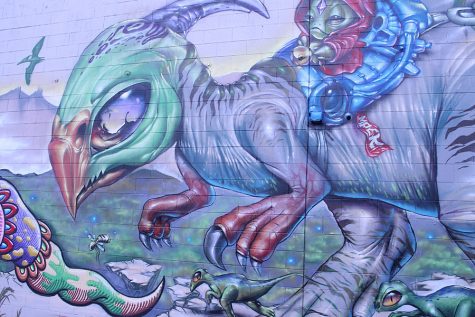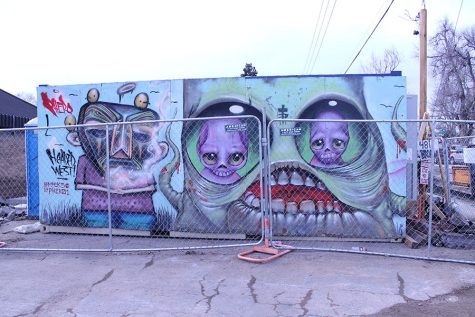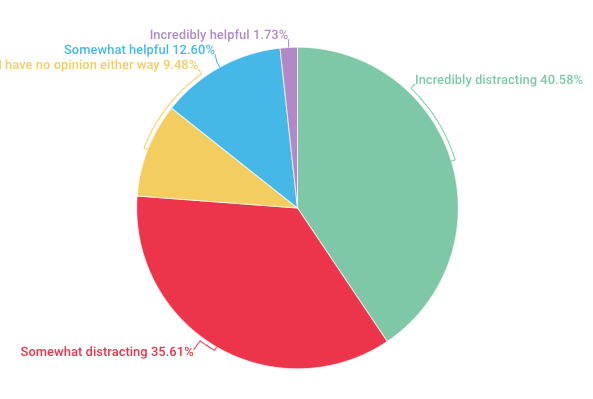Graffiti and Street Art: Where is the Line?
February 10, 2017
Graffiti comes in many forms. Some are murals that are full of color and life, while others are just small tags that serve a very different purpose. This type of street art as a whole is illegal and most people don’t consider it art. Legal or not, I consider graffiti one of the most expressive forms of art. It’s raw and real; a lot of graffiti displays real-world problems in different styles.

Graffiti is about putting a message out there, using vivid colors or large letters to get something across. Banksy is one of the most famous graffiti artists and his pieces can be very controversial, and not just because they are against the law. He uses black and white primarily and his focus is people most of the time. He shows people challenging the government or society’s standards.

I think graffiti brings art out in the open, as it’s not in museums where people have to pay to look at it. Rather, it’s right in people’s faces when they drive home from work or go on a morning run. Bringing art out into the real world is amazing; it gives towns life and cities culture.

Even if graffiti can be beautiful, it’s still vandalism. Some businesses don’t want large murals on the side of their buildings, regardless of how cool or interesting they may seem. I think most forms of it should be considered art. Graffiti, like all art, involves creativity, passion and work.

The line between illegal graffiti and commissioned murals is very thin. Walking around downtown, there were many beautiful works of art and most of the time it was hard to tell whether or not they were legal. While taking pictures, I ran into a graffiti artist. He was in the middle of working on a mural on the side of a building. The mural was commissioned by the building owner. He mentions that the divide between mural art and graffiti is small and based on permission. He defended the fact that graffiti is art, it just may not be allowed. He told me that he had been doing commissioned murals on buildings for the past seven years but he’s been working with graffiti since the 90s. He works well with portraits and stylistic writing. He didn’t give me his name and he wasn’t comfortable with me taking his picture, but he does have an Instagram account. Check out the hashtag #zehbicr to see some of his art.

Graffiti can range from simple gang tags to dramatic writing, and from bold colorful portraits to black and white silhouettes. Either way, all graffiti tells a story. It could be a story of the artist or even the town, but a story nonetheless, and every story is worth telling.














